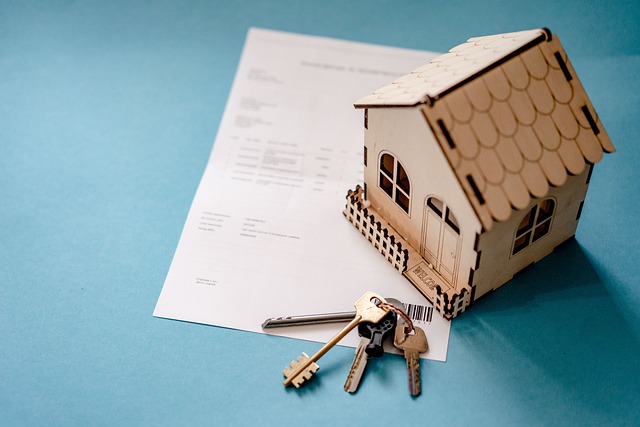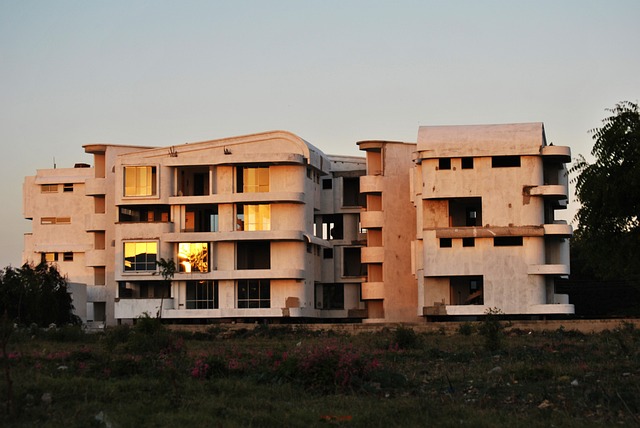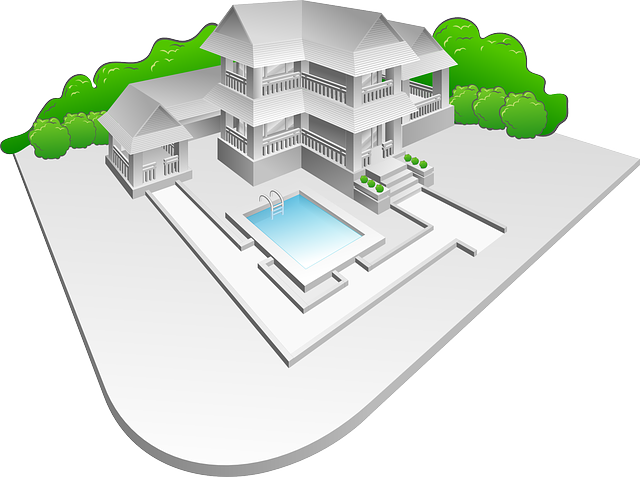After five years, the management of Singapore's Executive Condos (ECs) requires careful consideration of maintenance fee adjustments. These fees, initially set by developers to cover upkeep of common areas and facilities, can change due to factors like inflation, aging infrastructure, and rising operational costs. The Council for Estate Management (CEM) and the Condominium Act guide how these fees are calculated and used post-five years, with sinking funds playing a key role in financial planning. Owners should anticipate and plan for potential fee increases, considering historical trends and future needs outlined in the Master Maintenance Plan (MMP) and Annual Maintenance Fund (AMF). Proactive budgeting and engaging with the condo's management committee are essential strategies for residents to manage these costs effectively, ensuring the long-term financial stability and quality of life within the EC community. Understanding the "Executive Condo After 5 Years" perspective is crucial for maintaining and enhancing the value and living standards of these properties over their lifespan.
navigating the financial landscape of owning an Executive Condo (EC) beyond its initial years is a pivotal aspect for prospective and current EC residents. A critical factor in this journey is the understanding and management of maintenance fees, particularly after the five-year mark. This article delves into the intricacies of Executive Condo Maintenance Fees post-five years, elucidating the role of Singapore’s Housing & Development Board (HDB) in the oversight of these fees, projecting potential increment changes, and offering strategic advice for long-term financial planning. As EC residents consider their living expenses, anticipating and budgeting for these fees is essential for maintaining the integrity and functionality of their homes. Key market and economic indicators will also be analyzed to provide a comprehensive overview of how these factors influence maintenance fee trends, ensuring residents are well-prepared for the later years of their EC ownership.
- Understanding Executive Condo Maintenance Fees Post-Five Years
- The Role of Singapore's Housing & Development Board (HDB) in ECO Maintenance
- What to Expect: Changes in Maintenance Fees After the Fifth Anniversary
- Budgeting for Long-Term Costs: Projecting Your Executive Condo Maintenance Fee Increment
- Key Considerations When Assessing Post-Five Years Maintenance Fees
- The Impact of Market Forces and Economic Factors on Maintenance Fees
- Strategies for Managing and Preparing for Maintenance Fees in the Later Years of an Executive Condo
Understanding Executive Condo Maintenance Fees Post-Five Years

When homeowners of an Executive Condo (EC) approach the five-year mark post-purchase, it’s crucial to have a comprehensive understanding of the maintenance fee structure that will apply beyond this period. The maintenance fees for ECs are designed to cover the costs associated with the upkeep and management of common areas and facilities within the development. These fees are initially set by the developer and are subject to adjustment upon handover to the Management Corporation Strata Title (MCST) after five years.
Upon reaching this milestone, several factors contribute to potential changes in the maintenance fee structure. The ageing of common property infrastructure, inflation rates, and increased operational costs can necessitate an upward review of fees. Additionally, as the EC matures, repair and replacement costs for facilities and amenities may escalate, reflecting the changing needs and expenses of the development. Homeowners should anticipate that the management committee, which takes over from the developer, will reassess and adjust the maintenance fees to ensure the sustainability of the condominium’s upkeep. It is advisable for EC residents to keep abreast of these changes, as they are a part of the larger community responsible for decision-making in the Management Corporation Strata Title (MCST). Understanding the dynamics and the potential financial implications post-five years is essential for long-term planning and budgeting for maintenance fees as an Executive Condo ages.
The Role of Singapore's Housing & Development Board (HDB) in ECO Maintenance

In Singapore, the maintenance fees for Executive Condos (ECs) play a significant role in ensuring the upkeep and longevity of these housing units post-5 years from their completion. The Singapore Housing & Development Board (HDB), which oversees public housing, also extends its expertise to the management of ECs after they transition out of HDB’s purview upon reaching the 5-year mark. This transition signifies a shift in responsibility from HDB to the residents’ committee or managing agent, with the HDB providing guidelines and frameworks for the effective collection and utilization of maintenance fees. These fees are crucial for routine repairs, maintenance work, and the enhancement of facilities within the EC development. The HDB’s involvement ensures that the standards set during the initial years of the EC’s tenure are maintained, providing residents with a living environment that adheres to the quality and comfort expected from an Executive Condo after 5 Years. The HDB’s role in this process is pivotal, as it not only safeguards the interests of the homeowners but also upholds the value and appeal of these properties over time. Residents are encouraged to be proactive in managing their maintenance fees, as this directly impacts the collective living experience within the EC community.
What to Expect: Changes in Maintenance Fees After the Fifth Anniversary

Upon purchasing an Executive Condo (EC), future residents should be cognizant of the maintenance fee structure, particularly as it pertains to changes after the fifth anniversary of the development. Initially, the maintenance fees are relatively stable and are set to cover the essential services required for the upkeep of common areas and facilities within the EC. However, once the property turns five years old, the Annual Value (AV) reassessment takes place. This reassessment can lead to a fluctuation in the maintenance fees, as they are directly tied to the AV of the unit. The Singapore Land Authority (SLA) determines the AV, which is a valuation of the market worth of the property. As the AV increases with market conditions, so too may the maintenance fees post-fifth anniversary, reflecting the rising operational and management costs associated with the EC. It’s advisable for owners to budget for this potential increase and stay informed about the EC’s financial status through announcements from the managing agent or the condominium’s management council. Understanding this aspect of owning an Executive Condo is crucial for long-term financial planning and maintaining the property’s value and living standards post-five years.
Budgeting for Long-Term Costs: Projecting Your Executive Condo Maintenance Fee Increment

When considering the purchase of an Executive Condo, it’s crucial to factor in the long-term maintenance fees, as they play a significant role in the overall cost of ownership. Unlike initial purchase prices, which can fluctuate based on market conditions, maintenance fees are subject to different dynamics. Over time, particularly after the 5-year mark post-completion of the condo, these fees may increase. The Council for Estate Management (CEM) sets guidelines for such increments; typically, they recommend an increment that reflects the prevailing wage index and the sinking fund accrued. As the condo ages, repair and replacement costs for common property can rise, necessitating higher fees to maintain the building’s integrity. Prudent investors and residents should anticipate these potential increases when budgeting for their Executive Condo after 5 years. It’s advisable to review the historical increments of the maintenance fees to forecast future charges more accurately. This foresight not only aids in financial planning but also ensures that your living or investment experience remains unhindered by unexpected expenses related to communal upkeep. Understanding the trends and factors influencing these incremental costs allows you to better prepare for the longevity of your investment in an Executive Condo.
Key Considerations When Assessing Post-Five Years Maintenance Fees

When evaluating the post-five years maintenance fees for an Executive Condo (EC), potential buyers should pay close attention to the annual sinking fund contributions and the estimated maintenance fees beyond the initial five-year period. These fees are crucial for the upkeep of common areas and facilities, as well as for significant repairs or replacements that arise over time. It’s advisable to review the EC’s past maintenance fee trends to anticipate potential increases due to aging infrastructure or escalating costs of services. Additionally, understanding the condo’s management track record in financial planning and their reserve fund status can provide insight into the condo’s long-term financial health, which directly impacts your future expenses. Prospective owners should also consider the terms of the maintenance fee framework set forth by the developer and the Condominium Act, as these will govern how fees are calculated and used post-five years. By carefully assessing these factors, you can make an informed decision about the financial commitment involved in owning an Executive Condo after five years. Keep in mind that the maintenance fee structure is subject to change as per the Master Maintenance Plan (MMP) and the Annual Maintenance Fund (AMF) estimates, which are reviewed annually by the condo’s managing agent or council. Thus, it’s essential to review these documents for clarity on what to expect in terms of maintenance fees post-five years.
The Impact of Market Forces and Economic Factors on Maintenance Fees

Over time, the maintenance fees for an Executive Condo can be influenced by a myriad of factors, particularly market forces and economic considerations. In the initial years following its launch, the maintenance fee structure may remain relatively stable, reflecting the original budgetary projections and initial occupancy levels. However, as the condo ages beyond the five-year mark, denoted as “Executive Condo After 5 Years,” these fees often begin to adjust in response to evolving market conditions. Factors such as inflation, changes in the cost of living, and shifts in property management practices can affect maintenance expenses. For instance, the rise in the cost of labor for maintenance staff, increased tariffs on imported materials, or higher operational costs due to new regulations can lead to an uptick in fees. Conversely, a softening demand in the property market or an influx of new condos that undercut pricing may pressure sinking funds to maintain competitive rates. Owners must stay attuned to these fluctuations as they contribute to the long-term financial health of the condominium complex and influence the overall living experience within the community. It is advisable for unit owners to budget accordingly and anticipate adjustments in maintenance fees, considering the dynamic nature of property management costs.
Strategies for Managing and Preparing for Maintenance Fees in the Later Years of an Executive Condo

When planning for the long-term maintenance of an Executive Condo, especially after the 5-year mark post-purchase, it’s prudent to anticipate and strategize for the associated fees. These fees are crucial for the upkeep and repair of common areas and facilities within the condominium, ensuring that the living environment remains pleasant and functional for all residents. Owners should start by reviewing the condo’s maintenance schedule, which typically outlines planned maintenance activities and their corresponding costs. This forward-looking approach allows residents to budget effectively, setting aside funds annually to cover these fees without financial strain.
Moreover, understanding the cyclical nature of major refurbishments can help residents prepare for larger expenditures after 5 years. For instance, the replacement of roofing or waterproofing systems, repainting common areas, and upgrading of lifts occur on a set schedule. By actively participating in the condo’s management committee, owners can influence decision-making regarding maintenance priorities and cost-saving measures, which can be reflected in more predictable and manageable maintenance fees. This collective responsibility empowers residents to maintain their Executive Condo’s value and living standards over time.
